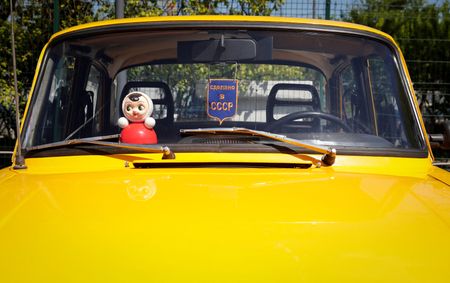
By Gleb Stolyarov and Alexander Marrow
MOSCOW (Reuters) -After a two-decade hiatus, Russia on Wednesday launched production of the Moskvich car brand at a plant near Moscow given up by the French carmaker Renault, with a new, modern Chinese design that barely resembles the Soviet-era classic.
While the last Moskvich (“Muscovite”) was a basic three-box saloon or pedestrian hatchback, the Moskvich 3 is a muscular-looking petrol-powered crossover hatchback with alloy wheels, LED slit-headlights and a large central touchscreen display.
In fact, pictures of the car show that it looks identical to the Sehol X4 compact crossover made by China’s JAC, also known as the JAC JS4. Sources told Reuters that JAC’s design, engineering and platform were being used to produce the brand, with parts being delivered from China.
Renault sold its majority stake in carmaker Avtovaz in May to the Russian state for reportedly just one rouble, but with a six-year option to buy it back. It sold its plant, now renamed the Moscow Automobile Factory Moskvich, for another rouble.
With just 600 vehicles slated for production this year, the new car is unlikely to alter the gloomy outlook for the wider industry, whose annual sales could end the year below 1 million for the first time in Russia’s modern history.
The government’s ultimate target of producing 100,000 Moskvich vehicles a year, some of which will be electric, is far below the industry average for a car plant of 200,000-300,000. Tesla makes 22,000 cars a week at its Shanghai plant.
“The first Moskvich cars will come off the production line in December 2022,” truck maker Kamaz, the plant’s technological partner, said in a statement.
Western sanctions over Moscow’s military campaign in Ukraine have sorely hampered access to foreign-made components, while many foreign car manufacturers have left. Kamaz and the government have established new supply chains, but not disclosed details.
“The task for the near future is to establish small-node assembly processes with the involvement of local suppliers by the end of 2023,” Industry and Trade Minister Denis Manturov said in a statement.
The ministry said the launch of full-scale production would provide jobs for around 40,000 more people. The car goes on sale in Russia next month, it added.
(Reporting by Gleb Stolyarov and Alexander Marrow; Editing by Kevin Liffey and Emelia Sithole-Matarise)

